Embark on a creative journey into the roar-tastic world of bear coloring pages. Within these fun designs, the majesty of these magnificent creatures comes to life with each stroke of color. Whether you’re a nature enthusiast, an art lover, or simply seeking a relaxing and enjoyable activity, these pages offer a unique opportunity to explore your artistic inclinations while also learning about and celebrating the beauty of bears.
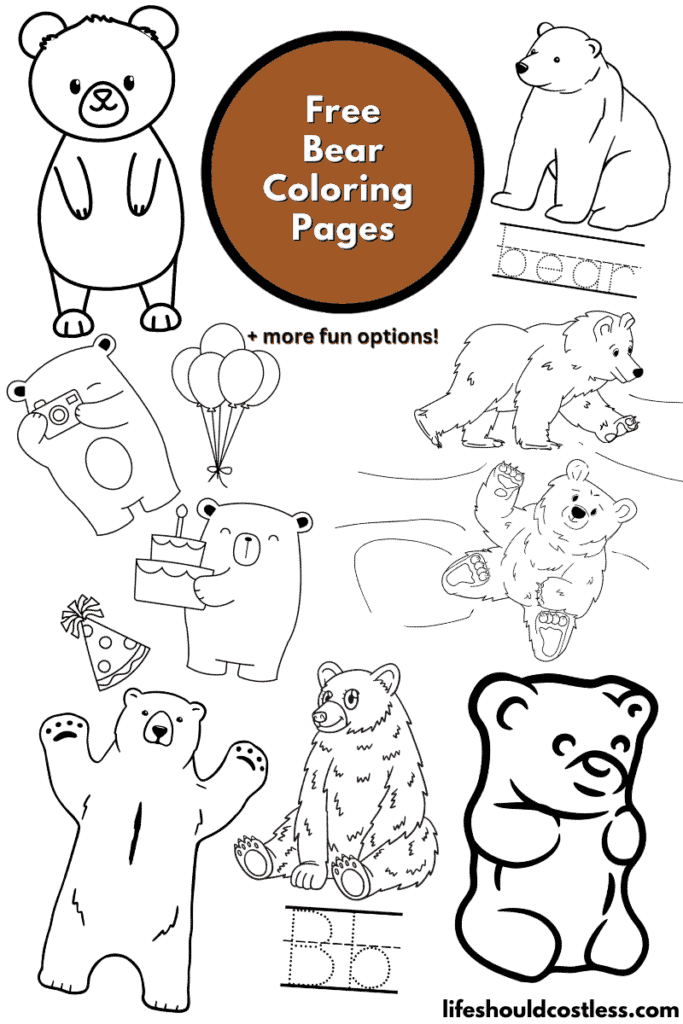
Get ready to unleash your imagination and infuse these black-and-white canvases with vibrant hues that capture the essence of these remarkable animals.
Simply choose the design that appeals to you the most, download the free PDF template, print it, and start coloring to your heart’s delight.
You could also consider utilizing them as embroidery patterns or as inspiration for delicate fine-line tattoos.
Bear facts
For those who are new to my coloring pages, it’s worth mentioning that I enjoy providing you with the opportunity to also delve into the subject matter.
This way, you can seamlessly transform your coloring experience into an educational journey. So, let’s dive right in!
Here are lots of fun and interesting, simplified, facts about bears:
- Diverse Species: There are eight bear species in the world, each with unique characteristics. These include the polar bear, grizzly bear, black bear, panda bear, and more.
- Polar Power: Polar bears are the largest land predators, well-adapted to their Arctic habitat. Their thick fur and layer of blubber provide insulation, and their black skin helps absorb and retain heat from the sun.
- Plant Lovers: While bears are often associated with a carnivorous diet, some species, like the panda bear, primarily consume bamboo. Their diet consists of about 99% bamboo, showcasing their specialized adaptation.
- Hypercarnivores: On the other hand, grizzly bears and brown bears are omnivorous, with a diet that includes berries, nuts, insects, fish, and even larger mammals. Their varied diet allows them to occupy diverse habitats.
- Hibernation Wonders: Bears are known for hibernating during the winter months. During hibernation, their heart rate, metabolism, and body temperature drop significantly, allowing them to conserve energy until spring.
- Gentle Giants: Despite their imposing size, bears are generally solitary and non-aggressive animals. They prefer to avoid confrontation and will typically retreat if they sense danger.
- Motherly Love: Female bears are devoted mothers. They give birth during hibernation and care for their cubs for an extended period, teaching them essential survival skills before they venture out on their own.
- Territorial Behavior: Bears have well-defined territories that they mark using scent markings like scratching trees or rubbing against objects. This helps them establish their domain and communicate with other bears.
- Exceptional Swimmers: Polar bears are excellent swimmers and can cover long distances in the water, using their front paws to paddle and their hind legs to steer. They primarily hunt seals in the water.
- Nose for Food: Bears have an incredible sense of smell, which aids in finding food from a considerable distance. Their olfactory abilities are among the most developed in the animal kingdom.
- Clever Hunters: Some bear species, like the grizzly bear, are known for their clever hunting techniques. They may overturn rocks in streams to catch fish or dig up ground squirrel burrows to access the rodents.
- Cultural Significance: Bears hold cultural significance in many societies. They appear in myths, legends, and stories across various cultures, often symbolizing strength, wisdom, or spirituality.
- Impressive Climbers: Despite their size, bears are agile climbers. Black bears, for instance, are known to ascend trees to escape predators or find food.
- Unique Communication: Bears communicate through vocalizations, body language, and scent marking. They growl, roar, huff, and use various sounds to convey their feelings and intentions.
- Conservation Concerns: Several bear species, including the polar bear and some subspecies of brown bear, are considered vulnerable or endangered due to habitat loss, climate change, and poaching.
These fascinating facts only scratch the surface of the remarkable world of bears.
From their diverse behaviors to their remarkable adaptations, bears continue to captivate our curiosity and inspire our appreciation for the natural world.
If you would like to continue on in your quest for bear-knowledge, here are some other reputable resources to learn about them while coloring:
- https://en.wikipedia.org/wiki/Bear
- https://kids.britannica.com/kids/article/bear/352836
- https://www.nationalgeographic.com/animals/mammals/facts/bears-grizzly-polar-panda
- https://www.nps.gov/subjects/bears/
- To see all of my free printables, go here.
- If you would like to see an alphabetized index of free printable coloring pages, go here!
- All of my animals coloring pages are found here.
- Or, my other mammals coloring pages can be found here.
Coloring tips
Coloring a picture of a bear can be a delightful and creative endeavor.
Here are some tips and tricks to enhance your coloring experience and bring these magnificent creatures to life on paper:
- Reference Images: Gather reference images of bears in various poses and settings. This will help you understand their natural colors, textures, and features, allowing for a more accurate and realistic coloring.
- Choose the Right Medium: Colored Pencils: These are versatile and allow for detailed shading and layering. Use lighter strokes for the initial layers and gradually build up the color intensity. Markers: Markers provide vibrant and bold colors. Opt for alcohol-based markers for smooth blending and gradients. Watercolors: Watercolors can achieve a soft and painterly effect. Start with light washes and layer gradually for depth. Digital Coloring: If using digital tools, explore different brushes and layer modes for realistic fur textures and shading.
- Blending Techniques: Colored Pencils: Use a blending pencil or a light-colored pencil to gently blend colors together, creating smooth transitions. Markers: Experiment with layering different shades to achieve seamless blends. You can also use a colorless blender marker for smoother transitions. Watercolors: Gradually blend colors by adding layers of water and adjusting the wetness of the paper.
- Fur Texture: Bears have a distinct fur texture. Use short, directional strokes to mimic the appearance of fur. Vary the pressure and angle of your strokes for a more realistic effect.
- Color Choices: Bears come in various colors, from light browns to deep blacks and whites. Observe reference images to select the right color palette for the specific bear species you’re coloring.
- Contrast and Shadows: Create depth by adding shadows and highlights. Consider the direction of the light source to determine where shadows fall and where highlights should appear.
- Detail Work: Focus on the eyes, nose, and other facial features. These areas can add personality and emotion to your bear drawing.
- Background: Choose a background that complements the bear’s environment. It can enhance the overall composition and mood of the artwork.
- Practice Grayscale: Before adding color, practice shading with a grayscale version of your drawing. This helps you understand the values and highlights of the image.
- Experiment and Enjoy: Don’t be afraid to experiment with different techniques, colors, and mediums. Coloring is a creative process, so have fun while expressing yourself.
- Patience and Layers: Achieving a realistic look often requires building up layers gradually. Be patient and layer colors to create depth and richness.
- Take Breaks: Coloring can be time-consuming. Take breaks to rest your eyes and prevent fatigue. Returning with fresh eyes can help you spot areas that need adjustment.
Remember that practice makes perfect.
As you continue to work on your bear artwork, your skills will naturally improve, allowing you to create stunning and expressive representations that capture the essence of these incredible animals.
Options For Printing:
Letter B is for bear writing practice worksheets
*My letter B is for bear coloring sheet printables are specifically designed to be used in a classroom setting, they are the only printable options on this page that do not need written permission to use in a public setting.
Please send the link to this post along if anyone asks you where you got them. Thank you!
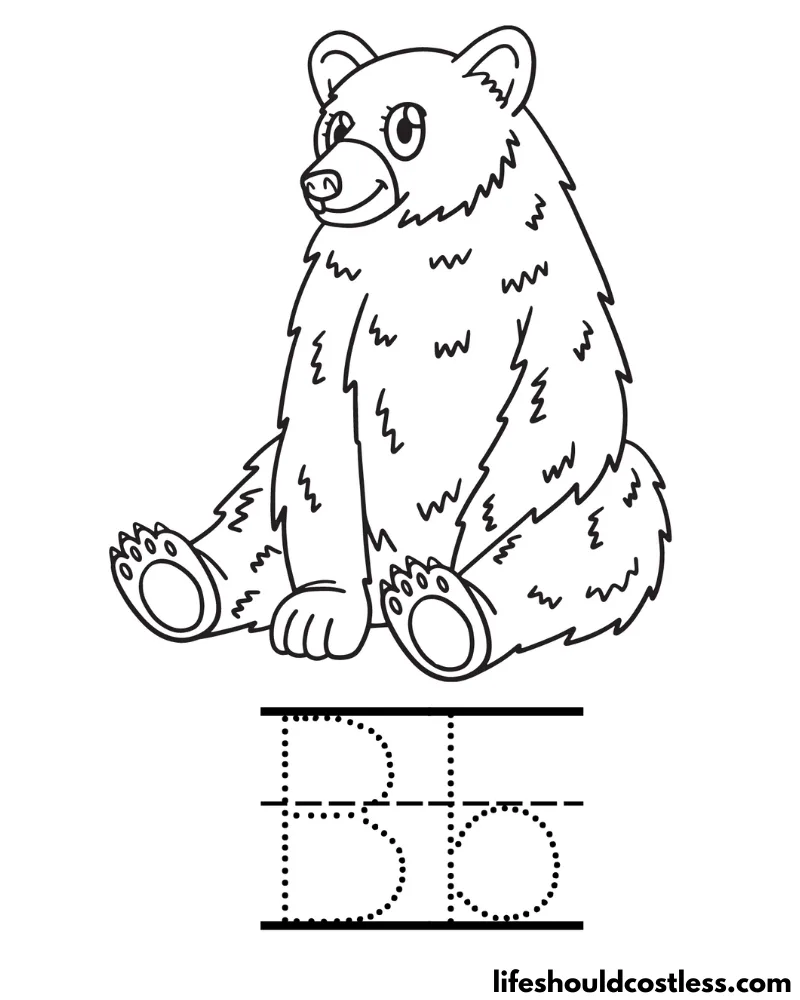
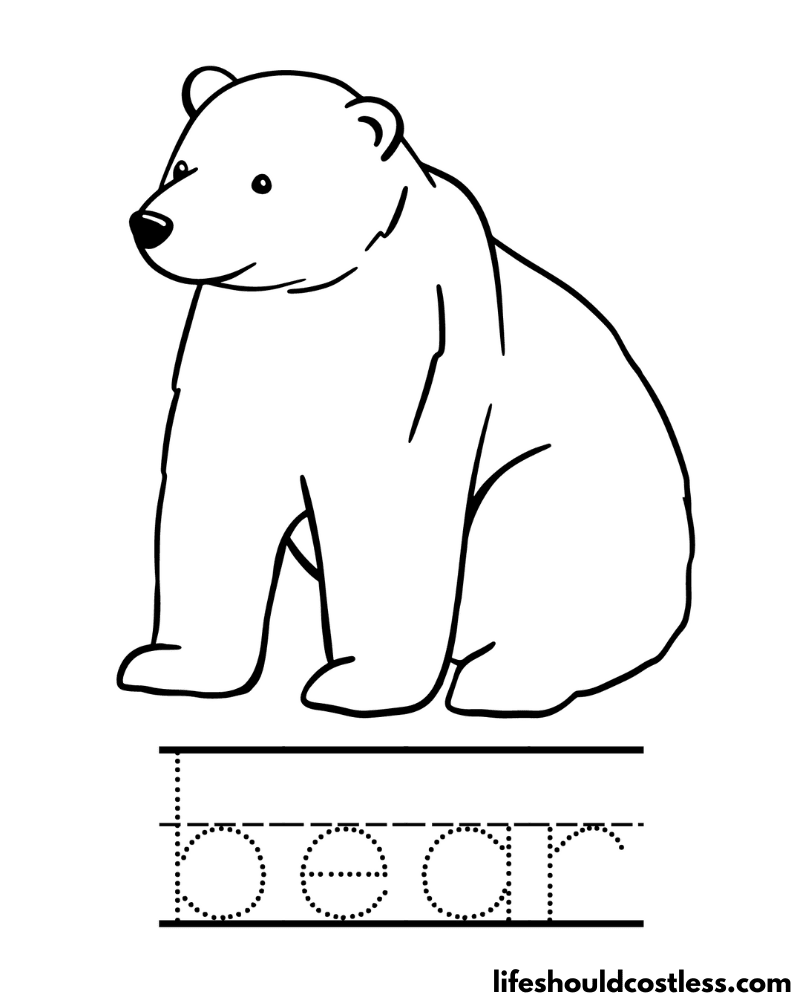
Various Bear Designs
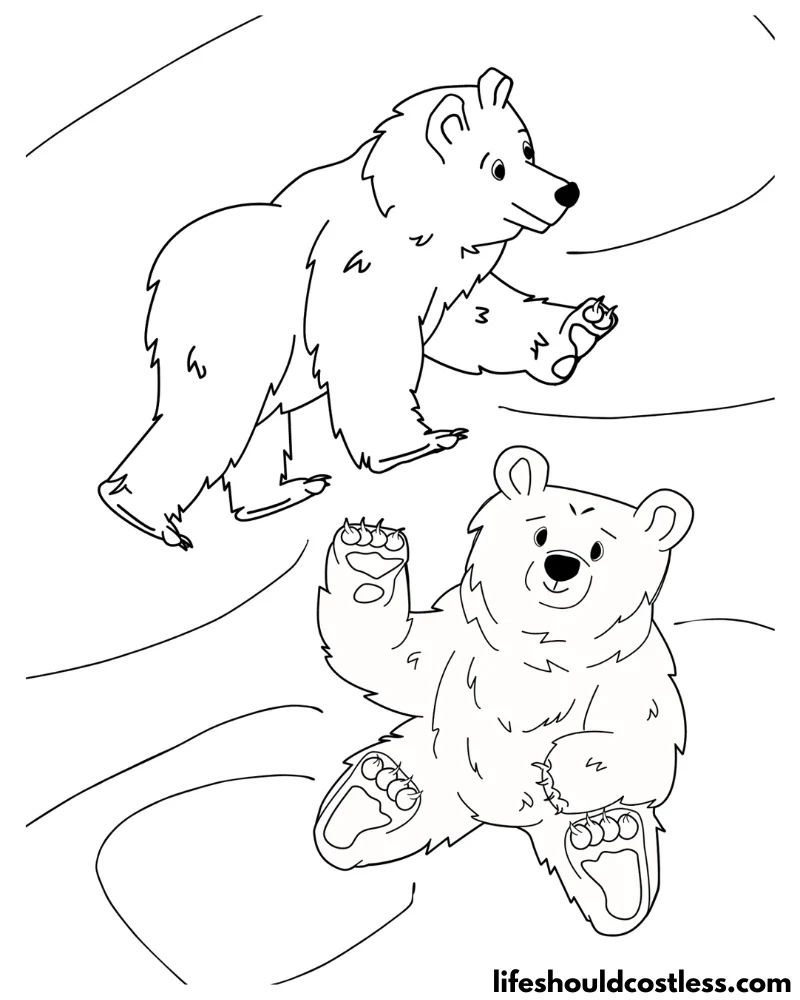
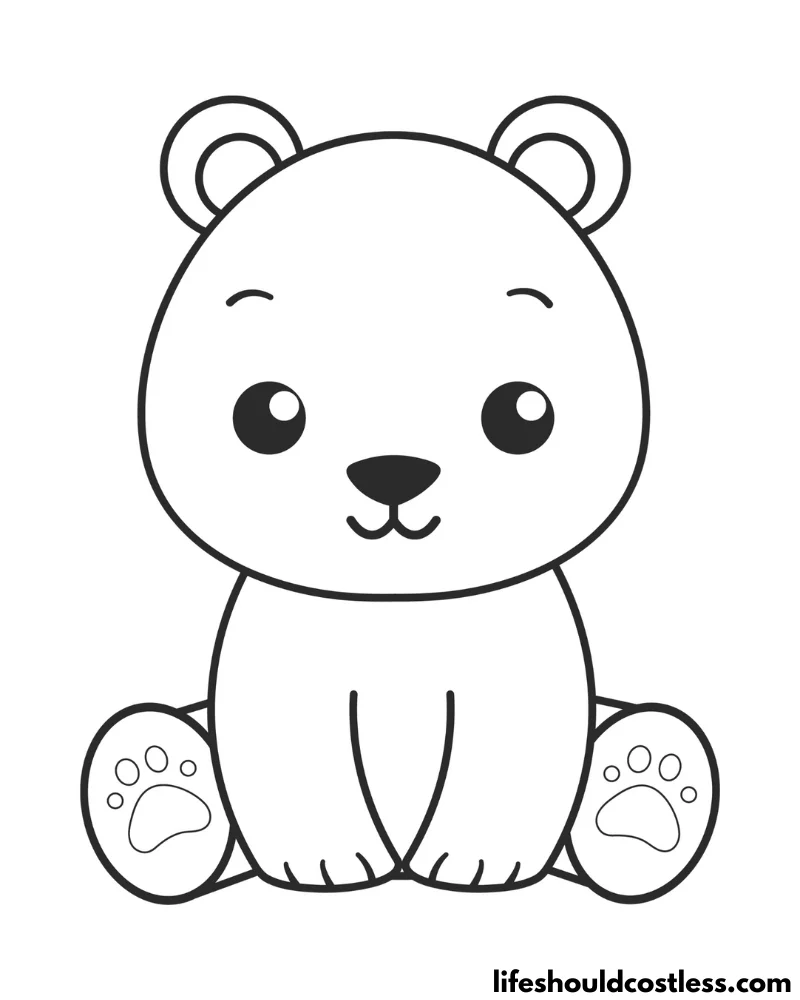
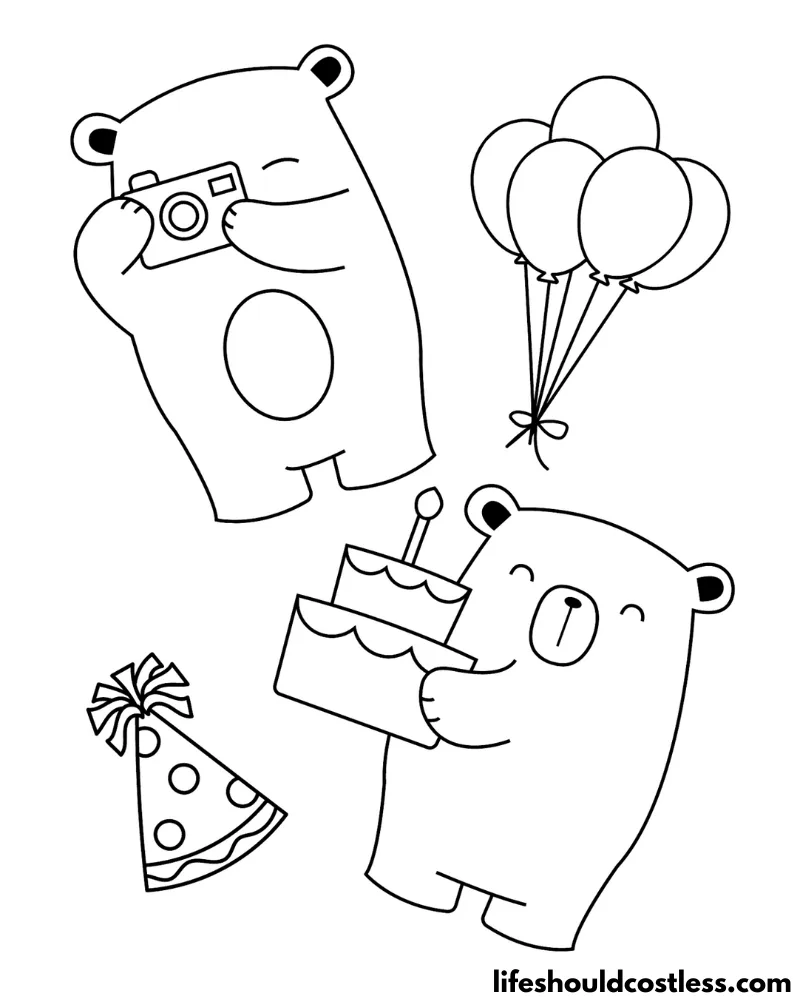
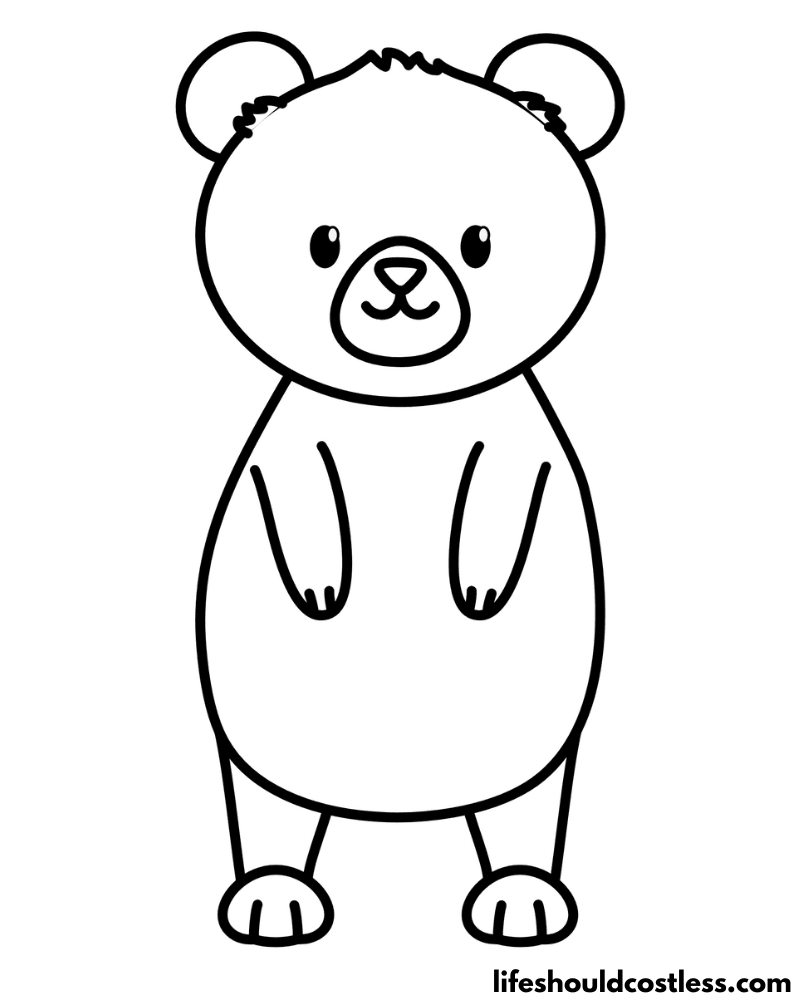
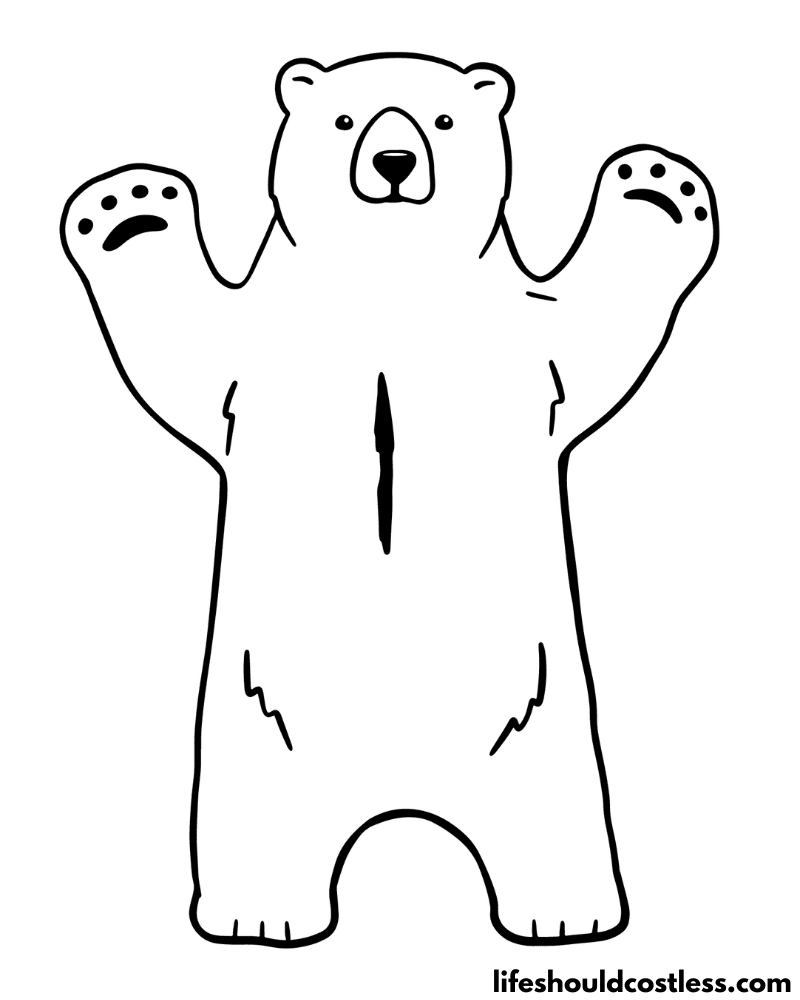
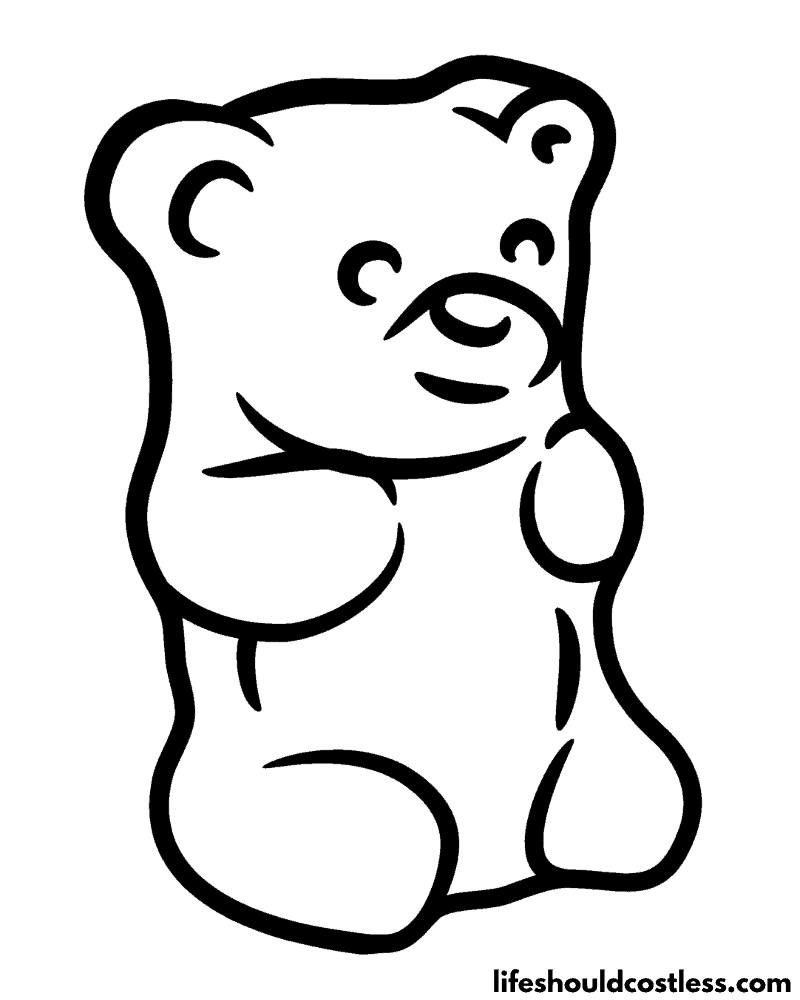
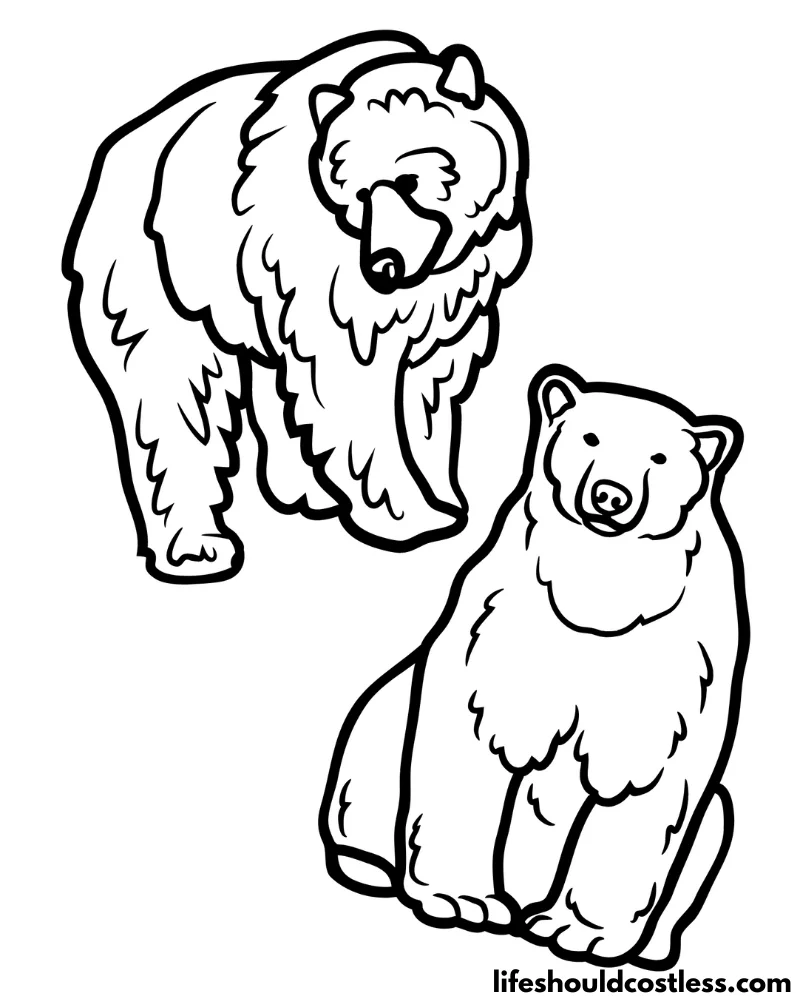
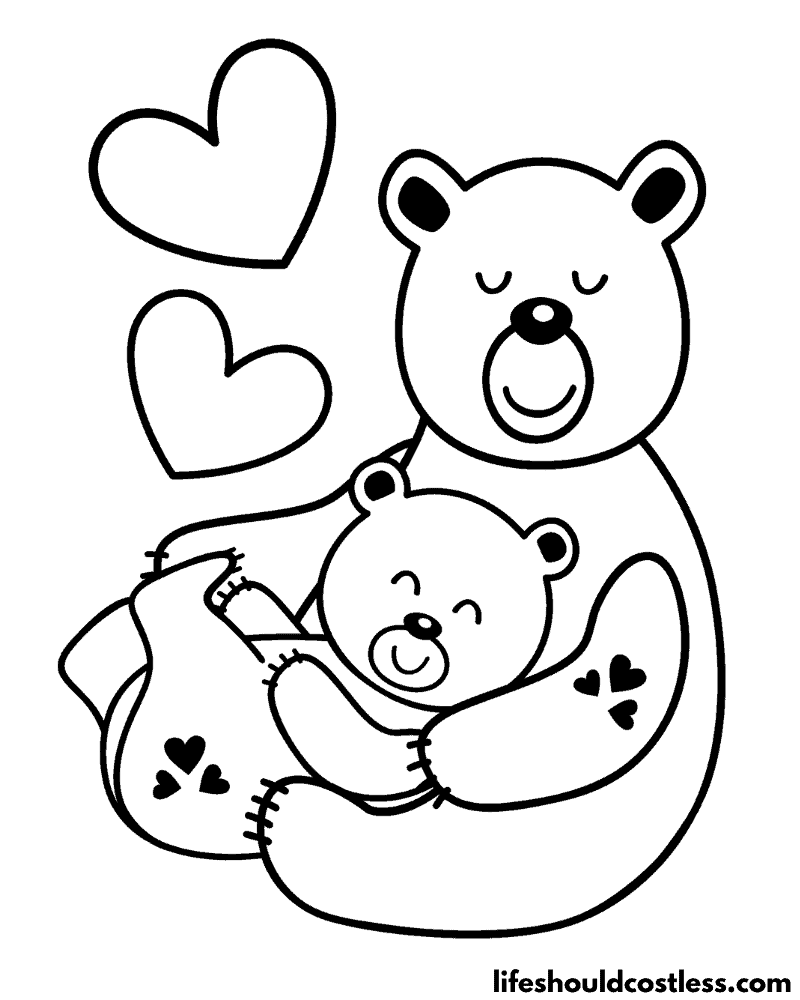
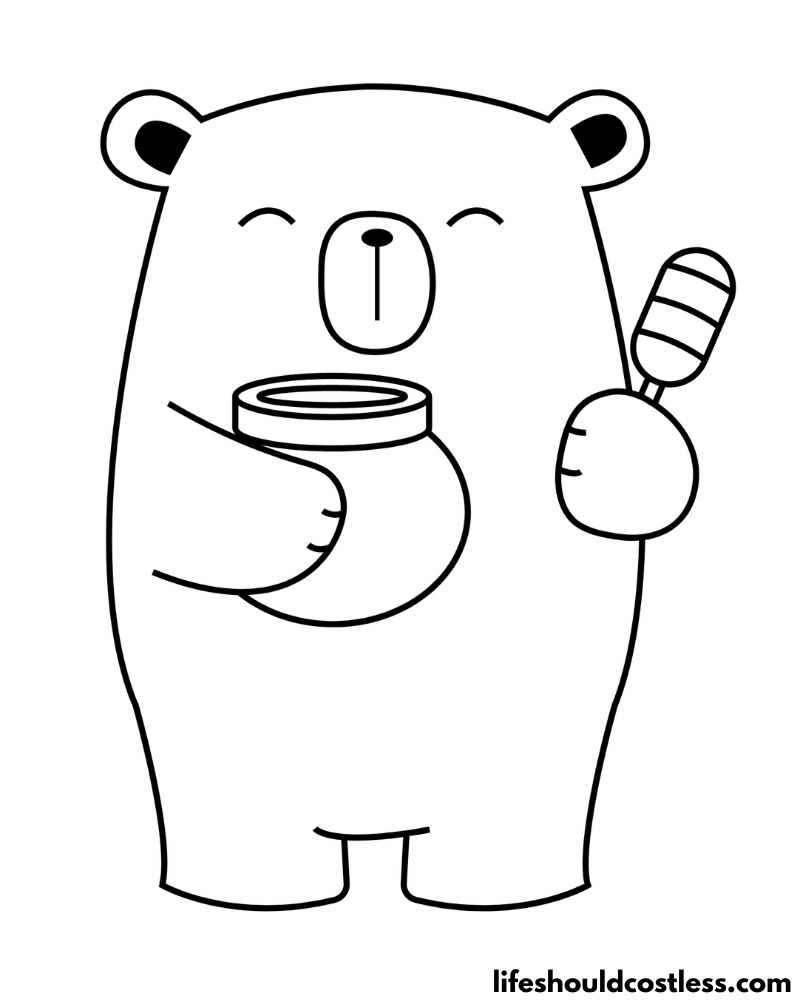
FAQ’s
The color of a bear can vary widely depending on the species and their habitat. Here are some general descriptions of the coloration of different bear species:
Polar Bear: Polar bears are often associated with being white, which helps them blend into their Arctic environment. Their fur appears differing shades of white, and their skin underneath is black to absorb and retain heat from the sun.
Grizzly Bear / Brown Bear: Brown bears, including grizzly bears, exhibit a range of colors from light brown to dark brown, sometimes even with reddish or blonde variations. Their fur color can be influenced by factors like age, diet, and genetics.
Black Bear: Despite their name, black bears can come in various colors, including black, brown, cinnamon, and even a bluish hue. Their coloration can be influenced by genetics and environmental conditions.
Panda Bear: Giant pandas are known for their distinctive black and white coloration. Their bodies are mostly white with black patches around their eyes, ears, and limbs. This unique coloration helps them camouflage in their bamboo forest habitat.
Sloth Bear: Sloth bears, found in India and Southeast Asia, have shaggy black fur with a characteristic V-shaped pale patch on their chest. They also have a white snout, often with a light-colored muzzle.
Sun Bear: Sun bears, native to Southeast Asia, have sleek, short black fur with a distinctive orange or yellowish horseshoe-shaped mark on their chest. They also have a distinctive white crescent shape on their chest, which varies in size and shape among individuals.
It’s important to note that within each species, there can be individual variation in color due to factors like genetics, age, diet, and environmental conditions.
*I will add more bear colour / color questions and answers as the questions get sent to me.
Conclusion
In conclusion, it is my hope that these bear coloring pages have offered an exciting and educational journey into the world of these captivating creatures.
Through the strokes of your chosen colors, you can bring bears to life on paper, capturing their unique features, personalities, and natural habitats.
By referencing their actual colors and behaviors, you can create stunning and realistic artworks that not only showcase your creativity but also deepen your understanding of these magnificent animals.
Remember to select the right coloring medium that suits your preferences and experiment with various techniques to achieve the desired fur textures, shadows, and highlights.
As you delve into the process, you’ll discover that coloring is not only an artistic endeavor but also a means of connecting with nature and expressing your admiration for these fascinating beings.
So, whether you’re a seasoned artist or a beginner, coloring bears provides an avenue to explore your creative potential, learn about different bear species, and create beautiful pieces that resonate with both artistic and educational values.
Immerse yourself in the world of colors, textures, and shades, and let your imagination run wild as you celebrate the majesty of bears through your own artistic interpretations.
Thanks so much for stopping by my blog and supporting my endeavors to make people’s lives a little easier/better/more affordable.
If you liked this post, or found it helpful in any way, please make sure to share it with your family, friends, and co-workers via social media.
Or you could even send them the direct link via email. Whichever way you choose to spread the love, I super appreciate it! ~Sarah

How To Follow & Support This Site
- If you would like to subscribe to my email list, go here.
- Make sure to follow along via social media, by going here.
- If you would like to learn how to really show your support to this site (at no cost to you), go here.
- If you would like to make a direct donation to the site, go here.
Check out my other free printables
- To see all of my free printables, go here.
- If you would like to see an alphabetized index of free printable coloring pages, go here!
- All of my animals coloring pages are found here.
- Or, my other mammals coloring pages can be found here.
Otherwise, here are direct links to several of my other related posts that you’re also going to love:
Animals / Mammals
Animals / Birds
Animals / Insects
Other good resources for a printable bear
- https://www.dreamstime.com/illustration/bear-coloring-pages-children.html
- https://www.colorwithfuzzy.com/bear-coloring-pages.html
- https://clipart-library.com/american-black-bear-coloring-page.html
*This post was originally shared to this blog on 08/14/2023, and has since been updated to improve user experience, add video instruction, as well as to make it as shareable as possible across the social medias.
**Please note that I do try my hardest to provide factual, but easy to understand, information about each topic. If you notice a discrepancy in my coloring pages, facts, or see something that you deem “misinformation/incorrect” please make sure to notify me about it. I would prefer that you send me an email with a link to a more reputable resource on that subject, so that I can correct it as soon as possible. Thanks so much for helping this site become the best that it can be!
***Resources from djinkers were used in the production of this article.
